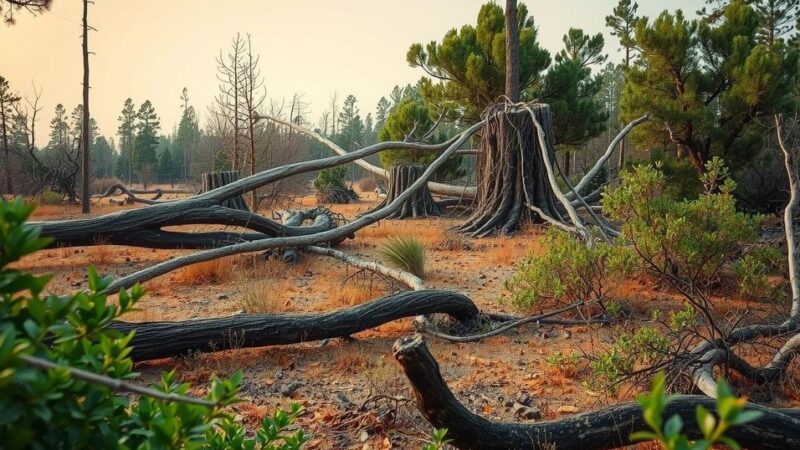On February 18, a wastewater embankment from a copper mine in Zambia collapsed, releasing over 50 million liters of toxic waste into Mwambashi River. This incident, attributed to Sino-Metals Leach Zambia, has resulted in ecological devastation and threats to public health, prompting government investigations and calls for better regulatory oversight. Stakeholders emphasize the need for preventive measures to avoid future disasters.
On February 18, a significant environmental disaster occurred in Zambia when an embankment, designed to store wastewater from copper mining, collapsed. This breach released over 50 million liters of toxic waste into the Mwambashi River, a tributary of the Kafue River, which serves as a crucial water source for much of Zambia’s population.
The copper mine responsible for this incident is operated by Sino-Metals Leach Zambia, a company owned by Chinese interests, located in Kitwe District, Copperbelt Province. The consequent release of suspected highly acidic effluent has resulted in catastrophic impacts on local ecosystems, including the widespread death of fish, loss of crops, and disruption of water supply to nearby communities, thus endangering human and animal health.
Approximately 60% of Zambia’s 20 million residents rely on the Kafue River Basin for essential activities such as irrigation, fishing, and industrial processes. The Zambian government’s initial assessments indicate significant damage to maize and groundnut crops, with the full extent of ecological devastation still to be determined. This disaster poses a multifaceted threat, contaminating water sources with heavy metals and creating lasting health risks for communities reliant on this water for consumption.
Furthermore, the pollution is likely to undermine agricultural practices through unsafe irrigation and the bioaccumulation of contaminants in the food chain. The resultant economic implications are severe as the local fisheries, agriculture, and tourism sectors suffer, alongside the burden of extensive cleanup costs. Long-term effects could threaten the sustainability of local ecosystems.
The incident also jeopardizes the Kafue Flats Key Biodiversity Area, known for its unique wildlife, including endemic species such as the Kafue lechwe and a diverse population of over 450 bird species, including endangered cranes. This highlights the environmental significance of the impacted regions.
In response to the crisis, the Zambian government has initiated an independent investigation into the pollution of water bodies in the Copperbelt region, following growing concerns about the environmental impact of mining activities. BirdWatch Zambia (BWZ) expressed serious concerns regarding the pollution in a coalition called the Zambia Environmental Justice Coalition, advocating for better environmental management practices in mining.
BWZ Program Manager, Mary Malasa stated, “This is not the first time a disaster of this nature has occurred, and the level of damage witnessed—both to people and the environment—is unacceptable. Such incidents are preventable. While we commend the Zambian government for responding, a proactive approach is better than a reactive approach in preventing such disasters from happening in the first place.”
Additionally, BWZ has urged the Zambia Environmental Management Agency (ZEMA) to enhance regulatory oversight and implement stringent preventive measures.
The environmental disaster in Zambia underscores the urgent need for robust management and regulation of mining activities. With significant consequences for local ecosystems, economies, and community health, proactive measures are essential to prevent future incidents. Stakeholder initiatives, including government investigations and coalition efforts, highlight the critical nature of addressing these environmental challenges effectively.
Original Source: www.birdlife.org






